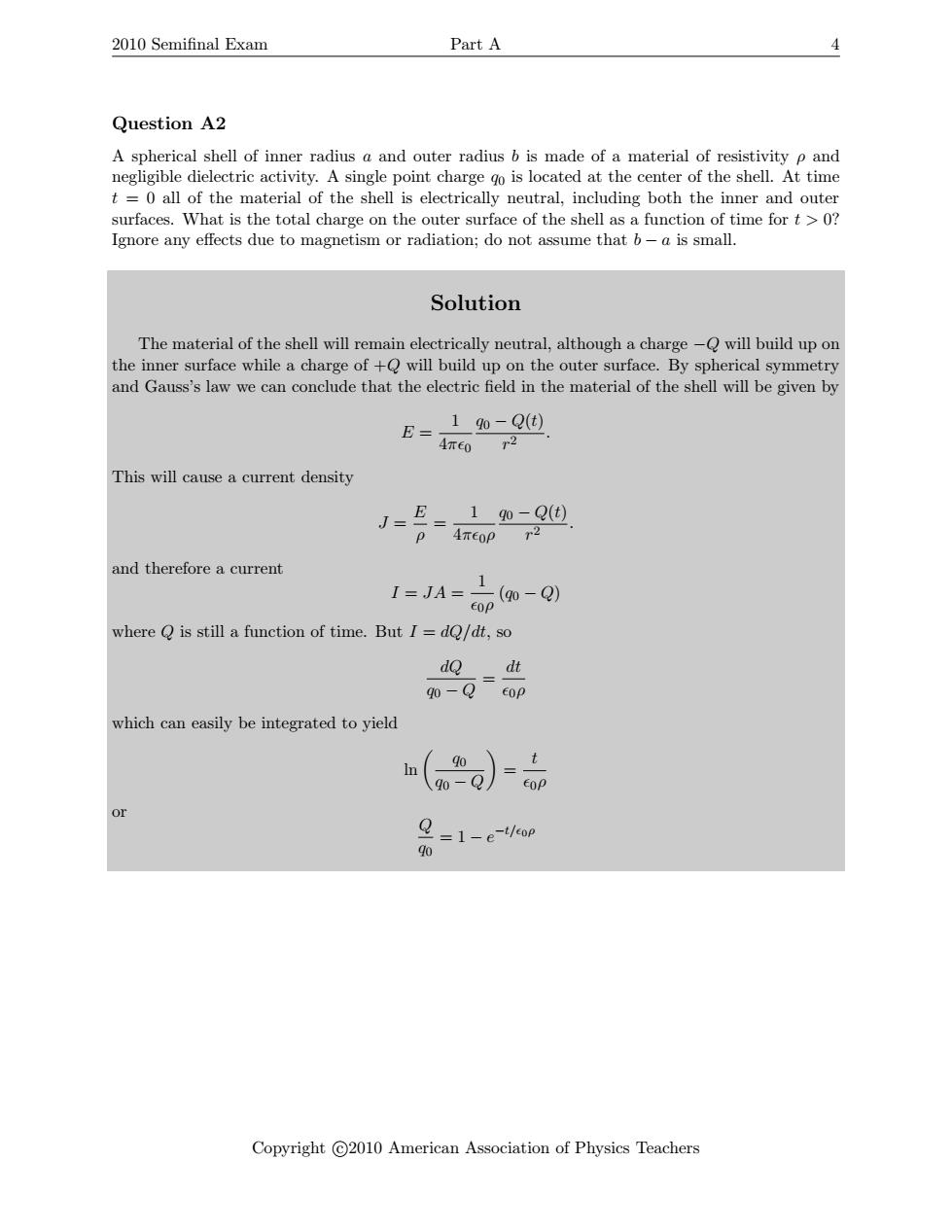正在加载图片...

2010 Semifinal Exam Part A 4 Question A2 A spherical shell of inner radius a and outer radius b is made of a material of resistivity p and negligible dielectric activity.A single point charge go is located at the center of the shell.At time t =0 all of the material of the shell is electrically neutral,including both the inner and outer surfaces.What is the total charge on the outer surface of the shell as a function of time for t>0? Ignore any effects due to magnetism or radiation;do not assume that b-a is small. Solution The material of the shell will remain electrically neutral,although a charge-Q will build up on the inner surface while a charge of+Q will build up on the outer surface.By spherical symmetry and Gauss's law we can conclude that the electric field in the material of the shell will be given by 190-Q(t) E= 4TEO r2 This will cause a current density E 1 go-Q(t) J=上= P 4Teop r2 and therefore a current 1=JA= -(90-Q) EO where Q is still a function of time.But I=dQ/dt,so dQ dt go-Q coP which can easily be integrated to yield n 90 90-Q/ Q=1-e-t/cop 4o Copyright C2010 American Association of Physics Teachers2010 Semifinal Exam Part A 4 Question A2 A spherical shell of inner radius a and outer radius b is made of a material of resistivity ρ and negligible dielectric activity. A single point charge q0 is located at the center of the shell. At time t = 0 all of the material of the shell is electrically neutral, including both the inner and outer surfaces. What is the total charge on the outer surface of the shell as a function of time for t > 0? Ignore any effects due to magnetism or radiation; do not assume that b − a is small. Solution The material of the shell will remain electrically neutral, although a charge −Q will build up on the inner surface while a charge of +Q will build up on the outer surface. By spherical symmetry and Gauss’s law we can conclude that the electric field in the material of the shell will be given by E = 1 4π0 q0 − Q(t) r 2 . This will cause a current density J = E ρ = 1 4π0ρ q0 − Q(t) r 2 . and therefore a current I = JA = 1 0ρ (q0 − Q) where Q is still a function of time. But I = dQ/dt, so dQ q0 − Q = dt 0ρ which can easily be integrated to yield ln q0 q0 − Q = t 0ρ or Q q0 = 1 − e −t/0ρ Copyright c 2010 American Association of Physics Teachers